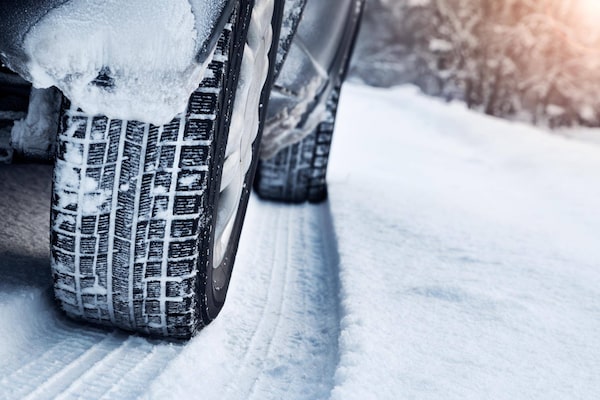
Many people will opt for steel rims because they are less expensive compared with pricey alloys.AGrigorjeva/Getty Images/iStockphoto
Why does everybody with winter tires have ugly black steel rims? Why not just put winter tires on your existing wheels and change them back in the fall? If they're on their own rims, they're just a lot heavier to carry around. Is there some other purpose I'm missing? – Sean, Toronto
There are real reasons to get winter tires. The biggest is safety. They're proven to shorten stopping distances on snow and ice. And, in Ontario, your insurance company is required to give you a discount if you use them.
But why would you want to put your winter tires on their own wheels?
"Having tires mounted and demounted semi-annually is quite a strain on the tire itself," said David Weatherhead, automotive professor at Centennial College in Toronto. "Especially with lower-profile tires, it stresses the rubber around the bead of the tire and can lead to damaging the rubber, which in turn can lead to tire degradation and, therefore, leaks."
The reason you see so many of those black wheels? Compared with pricey alloys, black steel is a steal.
"Many people will opt for the steel option as steel rims are, in fact, less expensive," Weatherhead said.
Depending on the size you're looking for, you can likely find basic black steel wheels starting at around $50 to $80 each. Even the cheapest aluminum alloy wheels – which look a little closer to what your car came with – could cost up to three times as much.
Wheel deal?
Another big reason people choose winter wheels? You'll save money when you put your winter tires on in the fall – and take them off in the spring.
"It differs between regions, but you'd probably be saving $75 to $100 per season if they're already on the rims because it is significantly less work, so it's less of a charge for us to do it," said Geoff Wiebe, a Regina-based tire expert with Kal Tire.
But whether you end up saving money over all depends on how much you spend on those wheels.
"We do find it's less and less financially reasonable for customers to buy tires on wheels," said Blair Martin, a manager with OK Tire in Vancouver. "A lot will take up to eight years to recoup the investment."
And, if your car needs Tire Pressure Monitoring System (TPMS) sensors, those can cost $70 or more a wheel.
Your car's TPMS system monitors tire pressure and warns you – with a yellow light – when it is 25 per cent below the pressure recommended by your car's manufacturer.
There are two kinds of systems: direct and indirect. Direct uses sensors in each wheel that send signals to your car's computer.
Indirect doesn't use sensors – it uses data from the anti-lock brake (ABS) system to see how fast your wheels are spinning. If tires get smaller because of a sudden leak, they'll spin faster and that will trigger the tire pressure warning.
A number of auto makers are using indirect systems, but if you've got a direct system, the sensors for all four wheels could cost $280 or more. Add that to the price of even the cheapest steel wheels and you could be paying more than $500 alone just for for that winter set of wheels. That's on top of whatever you paid for your winter tires.
And if you don't get sensors? That light stays on all winter. For a lot of people, that's worth the savings.
"Most people opt to leave the light on, which in itself is a risky choice," Weatherhead said. "[You're] losing an extra level of protection that the manufacturer had built in for safety and fuel-economy purposes."
Small savings?
There’s another way winter wheels could save you money. With minus sizing, a smaller set of winter wheels could let you buy smaller, potentially cheaper winter tires.
"Often, tire shops will have 16-inch or 17-inch packages that still fit the vehicle," Weatherhead said. "Care should be taken to ensure that it is an approved size for the vehicle as well as an approved tire speed rating."
Minus sizing also lets you put on thicker winter tires with deeper treads – compared with the low-profile tires your car comes with – that handle better in snow.
But that different tire size could take some getting used to, Weatherhead said.
"Changing the speed rating and tire size will affect the vehicle's handling characteristics and could make the vehicle perform significantly different in maneuvers such as cornering," he said.
Protection from salt?
Putting your winter tires on their own wheels means the wheels your car came with get to spend winter inside, safe from road salt that can corrode them, Weatherhead said.
But washing your car regularly will reduce your chances of wheel damage, said Calvin Feist, automotive instructor at the Northern Alberta Institute of Technology in Edmonton.
"Road salt will damage alloy wheels, but it will damage steel wheels as well," Feist said. "You just need to clean your vehicle regularly and the wheels will last and look good for a long time."
Have a driving question? Send it to globedrive@globeandmail.com. Canada’s a big place, so let us know where you are so we can find the answer for your city and province.